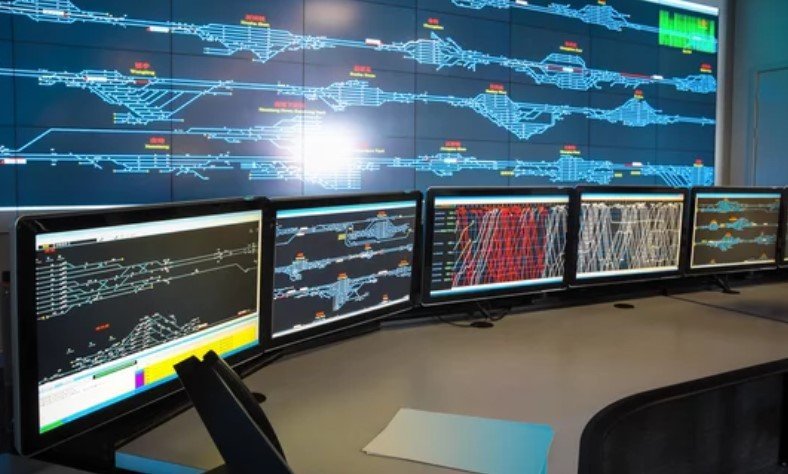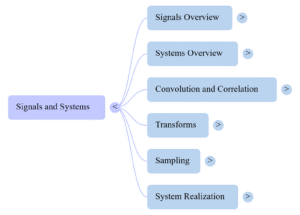
- Instructor: Andrea Neumann
- Lectures: 46
- Students: 59692
- Duration: 10 weeks
The provided course offers a comprehensive quick guide to the field of Signals and Systems, defining core concepts like signals and systems alongside their various classifications, such as continuous vs. discrete or linear vs. non-linear. A significant portion of the material focuses on transform analysis, detailing the mathematical tools used to study these entities, including the Fourier Series, Fourier Transform, Laplace Transform, and Z-Transform, complete with their properties, conditions for existence, and concepts like the Region of Convergence (ROC). Furthermore, the guide covers essential operations like convolution and correlation, signal properties such as sampling and the Nyquist rate, and system characteristics like causality and stability.
Signals and Systems Course is based on textbook learning material by Academy Europe.

Study Hard AND Study Smart!
Dear Students,
The textbook courses by Academy Europe are targeted at providing the students with the most important aspects of the theoretical and methodical materials. In addition, the textbook courses will also focus on the philosophical background for the development and use of the theoretical background and are thus to be understood as partly complementary to the material of the course notes. It is assumed and strongly suggested that the students study and become familiar with the course notes.
Empower Academy Europe
Join Academy Europe social media channels on Youtube, Facebook, Linkedin, Twitter and more. Share and like them by using your social media accounts.
Facebook: www.facebook.com/academyeurope
Twitter: https://twitter.com/academyeurope
Youtube: www.youtube.com/c/academyeurope
Linkedin: https://www.linkedin.com/company/academy-europe/
Certification
Academy Europe presents high-quality formal diplomas, certificates and e-certificates which are formal proof and recognition of accredited online courses. It shows all student’s abilities to learn and achieve high results and is very useful to promote personal career including with CVs, job applications and self improvements.
Samples: Horizantal Diploma – Horizantal Certificate – Vertical E-Certificate



How can you get your certificate at Academy Europe?
- You must click “complete” link at the end of every lesson of your course after you finish them.
- When you finish all lessons of course, the “finish course” link is going to be active at the end of last lesson.
- When you click the “finish course” link, you will finish your course on Academy Europe officially. Then, “certificate” page of you completed course will be automatically active.
- You can see and download your certificate online after you click on your “certificate” link.
Audience
This course by Academy Europe aims at imparting quality education and training to students.
Academy Europe is dedicated to its students, their specific learning requirements, and their overall learning success.
This course is directed toward a student-centered, independent study, asynchronous learning approach.
After completing this course on Academy Europe, students will get self improvement and promotion in their careers.
This course is based on at least two learning skills which are provided to the users through audio & visuals, videos, verbal presentations and articles, all of which are asynchronized with distance education approach.
Prerequisites
Before you start proceeding with this course on Academy Europe, we are assuming that you have a good aptitude and can think logically. You should want to try something different.
Ideal candidates for the course would typically possess:
– Discipline and attentiveness
– Ability to conduct research
– Ability to perform tasks with speed, efficiency, and accuracy
– Analytical judgment
– Patience to interpret technical/scientific data
– A willingness to learn, roll up your sleeves and work toward your dream!
– A computer, tablet or smartphone and an internet connection
– Basic computer skills
Curriculum
- 8 Sections
- 46 Lessons
- 10 Weeks
- Introduction1
- Briefing on Signals and Systems: Core Concepts and Transform Analysis7
- 2.1Executive Summary
- 2.2I. Foundational Concepts: Signals and Systems
- 2.3II. Classification of Signals and Systems
- 2.4III. Core Operations and Analysis
- 2.5IV. Frequency Domain Analysis: The Fourier Method
- 2.6V. Advanced Transforms for System Analysis
- 2.7VI. The Bridge Between Continuous and Discrete: Sampling
- Academic Lecture Notes: Fundamentals of Signals and Systems9
- 3.11.0 Introduction to Signals and Systems
- 3.22.0 Elementary Signals and Signal Operations
- 3.33.0 Linear Time-Invariant (LTI) Systems and Convolution
- 3.44.0 Fourier Analysis for Continuous-Time Signals
- 3.55.0 Discrete-Time Fourier Transform (DTFT)
- 3.66.0 Sampling Theory and Signal Reconstruction
- 3.77.0 The Laplace Transform for Continuous-Time Systems
- 3.88.0 The Z-Transform for Discrete-Time Systems
- 3.99.0 Correlation and Spectral Density
- Transform Methods for the Analysis of Linear Time-Invariant Systems7
- 4.11.0 Introduction to Transform Methods in System Analysis
- 4.22.0 Foundational Concepts: Signals, Systems, and LTI Theory
- 4.33.0 The Fourier Transform: Frequency Domain Analysis of Continuous-Time Systems
- 4.44.0 The Laplace Transform: A Generalized Approach for Continuous-Time Systems
- 4.55.0 The Z-Transform: Analysis of Discrete-Time LTI Systems
- 4.66.0 Comparative Synthesis of Transform Methods
- 4.77.0 Conclusion
- A Systematic Methodology for Signal and System Characterization7
- 5.11.0 Introduction: Establishing a Framework for Analysis
- 5.22.0 Step 1: Foundational Signal Characterization
- 5.33.0 Step 2: Systematic System Characterization
- 5.44.0 Step 3: Computing System Response via Convolution
- 5.55.0 Step 4: Measuring Signal Similarity via Correlation
- 5.66.0 The Analyst’s Toolkit: Transform-Domain Techniques
- 5.77.0 Conclusion: A Unified Methodology for Analysis
- An Accessible Primer on Signals and Systems6
- The Four Key Classifications of SystemsIn the study of signals, a system is defined as a "device or combination of devices, which can operate on signals and produces corresponding response." In simpler terms, a system takes an incoming signal, called an input or "excitation," processes it, and produces a new signal, called an output or "response." To better understand and analyze these systems, we can categorize them based on their fundamental properties and behaviors. We can classify systems using four key pairs of characteristics. Each classification acts as a "test" that reveals something fundamental about how the system operates.5
- Signals and Systems Study Guide4
Requirements
- Discipline and attentiveness
- Ability to conduct research
- Ability to perform tasks with speed, efficiency, and accuracy
- Analytical judgment
- Patience to interpret technical/scientific data
- A willingness to learn, roll up your sleeves and work toward your dream!
- A computer, tablet or smartphone and an internet connection
- Basic computer skills
Features
- Before you start proceeding with this course on Academy Europe, we are assuming that you have a good aptitude and can think logically. You should want to try something different.
Target audiences
- This course by Academy Europe aims at imparting quality education and training to students.
- Academy Europe is dedicated to its students, their specific learning requirements, and their overall learning success.
- This course is directed toward a student-centered, independent study, asynchronous learning approach.
- After completing this course on Academy Europe, students will get self improvement and promotion in their careers.
- This course is based on at least two learning skills which are provided to the users through audio & visuals, videos, verbal presentations and articles, all of which are asynchronized with distance education approach.





